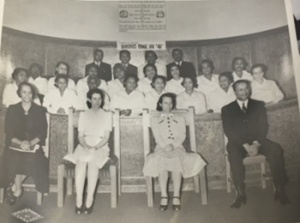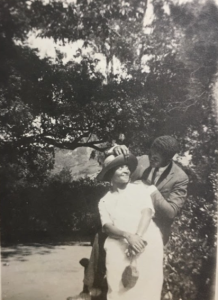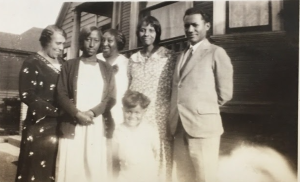3 Chapter 3
Following graduation, Troy interned in pastoring and evangelism before being assigned to the Bay Area in 1924.

During this time, he interned at a church as a music leader, tent master and preacher. By 1924, Troy was appointed to a newly organized church in Oakland, known as Market Street. Market Street Church was organized just one year prior, but Troy’s work was influential in finding the congregation a suitable building to host their meetings and he remained there until 1934.[1] Market Street was an offshoot of the Furlong Tract Church of which Theodore and Estella Troy had been involved in since its founding. The 1908 movement starting with just twenty-three members, was the first congregation of African American believers west of Missouri to be officially recognized by the Seventh-day Adventist Church but soon branched out across California.[2]
That first year in the Market Street Church, Troy married Ruby Bontemps, and in 1927 they had their only child, Owen Jr.

Ruby’s brother, Arna Bontemps, “the Great Slave Narrator”, was an influential writer and figurehead in the Harlem Renaissance, alongside other intellects including Langston Hughes and James Weldon Johnson. Ruby herself enjoyed public-speaking and philanthropy, served as a librarian and educator, and was prominent in civic affairs, most notably with the Pasadena Women’s Interracial Club in California during the 1950s.[3] She is credited with opening the first vacation Bible school in the Seventh-day Adventist Church.
The Market Street Church was Troy’s first opportunity to experiment in pastorship. In charge of his own congregation, Dr. Troy was able to incorporate his own ideas and experiences in healthy-living classes, music, and education. For example, Jennie Ireland’s influential health and Bible study classes were incorporated into Market Street, with Troy operating a clinic for more than one hundred members per month, known as the San Bernadino Bible and Health Chautauqua. Emphasizing the medical missionary work of the Seventh-day Adventist church, Troy continued to advocate for increased nursing, health, and evangelism amongst his own congregation, much like he had been taught at San Fernando.
Having been a keen musician at Pacific Union, as well as a musical teacher during his internship years, Market Street became a lively center for culture. Both Owen and Ruby Troy were accomplished musicians, and as such the church featured regular music performances for the congregation and wider neighborhood. Troy was also joined by J. E. Johnson, also a songwriter. The East Bay Male Chorus, also known as The Stellar Singers of Spiritual Songs, were well-known in the San Francisco Bay Area, and forerunners in the religious-radio movement. Troy also enjoyed hosting religious lectures, ranging from progressive topics like “The Great White Plague,” “Bullets, Ballots and Bread,” and “Satan’s Thousand Year Vacation,” which were reportedly met with immense public interest: “Crowded to the doors and many standing, was the scene that greeted Evangelist Owen A. Troy, on the opening night of the Bible Institute … The attendance and interest has been increasing from night to night” one newspaper reported.[4]


